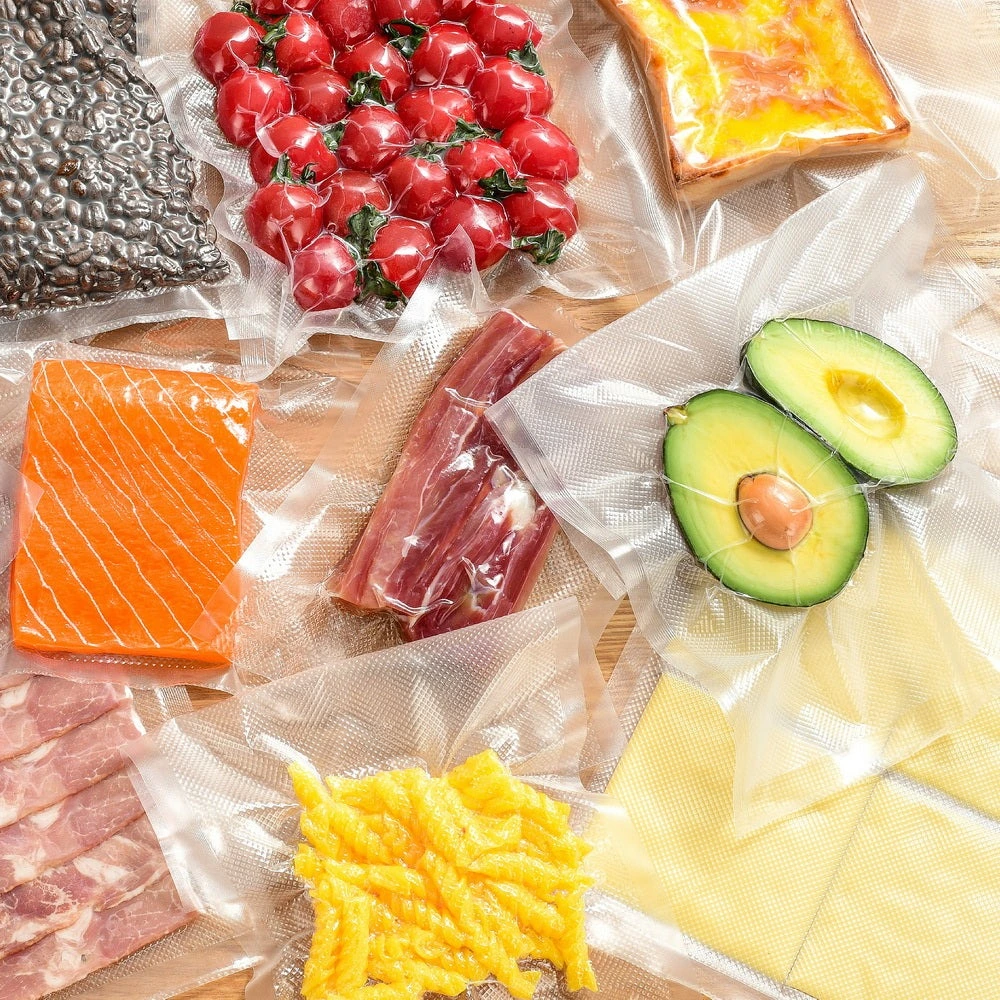In the quest to keep food fresh and extend its shelf life, there are various storage options available. Two of the most common methods are vacuum sealing and traditional storage methods like plastic wrap, aluminum foil, or containers. Each method has its advantages and limitations. In this comparative study, we’ll explore how vacuum seal bags stack up against traditional storage methods.
What is Vacuum Sealing?
Vacuum sealing involves removing air from a plastic bag and sealing it shut, creating an airtight environment. This method significantly slows down the degradation and spoilage process of food.
Traditional Storage Methods
Traditional methods include plastic containers, wraps, and aluminum foil, which provide a basic barrier against air and contaminants but don’t remove the air surrounding the food.
Comparative Aspects
1. Shelf Life
- Vacuum Sealing: Extends food's shelf life by 3-5 times compared to traditional methods.
- Traditional Methods: Limited shelf life extension due to air exposure.
2. Protection Against Freezer Burn
- Vacuum Sealing: Highly effective in preventing freezer burn.
- Traditional Methods: Less effective, as air trapped inside can lead to freezer burn.
3. Flavor and Nutrient Retention
- Vacuum Sealing: Better flavor and nutrient preservation due to reduced oxygen exposure.
- Traditional Methods: Potential loss of flavor and nutrients over time.
4. Space Efficiency
- Vacuum Sealing: More space-efficient as bags conform to the shape of the food.
- Traditional Methods: Containers can be bulky and take up more space.
5. Cost
- Vacuum Sealing: Initially higher due to the cost of the sealer and bags, but cost-effective in the long run.
- Traditional Methods: Lower initial cost but may lead to more food waste.
6. Convenience
- Vacuum Sealing: Requires a vacuum sealer but is straightforward once set up.
- Traditional Methods: Generally simpler and quicker for short-term storage.
7. Versatility
- Vacuum Sealing: Ideal for a variety of foods, including liquids when frozen first.
- Traditional Methods: More suitable for foods that need frequent access.
8. Environmental Considerations
- Vacuum Sealing: Less frequent usage of bags due to longer preservation.
- Traditional Methods: Potential for more waste with single-use plastics.
In conclusion, while traditional storage methods are convenient for short-term use, vacuum seal bags offer a superior solution for longer-term food storage. They excel in preserving food quality, extending shelf life, and are more cost-effective in the long run despite the initial investment. As each method serves different needs, the choice largely depends on your storage requirements and priorities.
By understanding the strengths and limitations of each method, you can make more informed decisions about how to best preserve your food, reduce waste, and enjoy fresher meals for longer.

